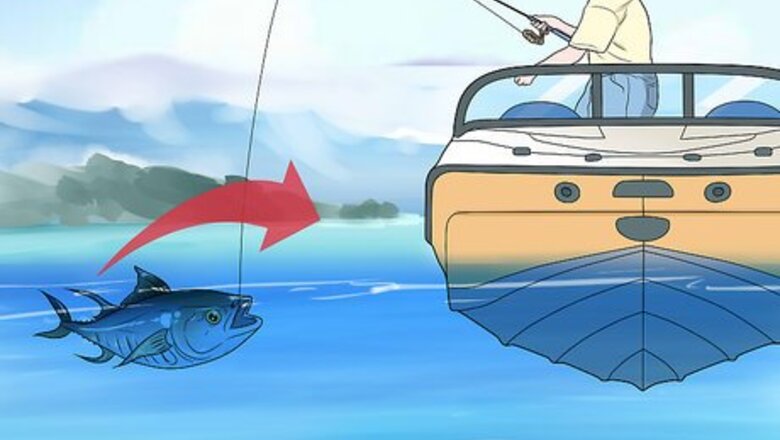
views
Controlling and Gaffing a Fish
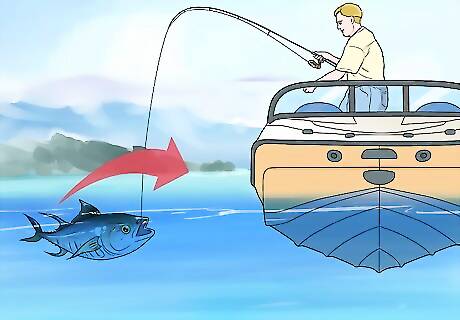
Reel in the fish as close as possible. To get in range to gaff the fish, you'll need to make sure that it's right against your boat. Reel in the fish so that it's as close to the side of the boat before attempting to gaff it. Gaffing a fish on the side of the boat is optimal because you'll have maximum mobility and can use the side of the boat to help stabilize the fish once you gaff it. Reaching for a large fish that's too far away from the boat could destabilize you and cause you to fall into the water.
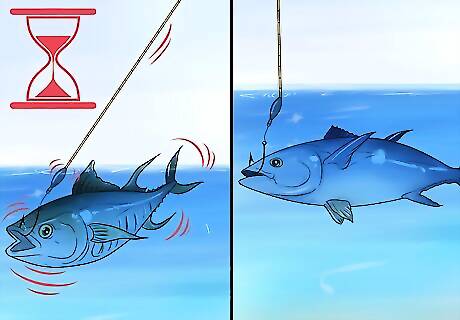
Wait until the fish gets tired and calms down. When the fish is still fighting on your line, don't try to gaff it because it can easily become unhooked and you can lose it. Instead, hold the fish on your line and wait for it to tire itself out. Once it's calm, you can begin to align your gaff. Take a look at the fish while it tires itself out and make sure that it's the species you want and is big enough to take home.

Hold the back grip of the gaff with your dominant hand. Hold the back most grip of the gaff with your dominant hand so that you can get the longest reach possible with the pole. Stick the gaff up and over the side of the boat while holding onto it tightly.
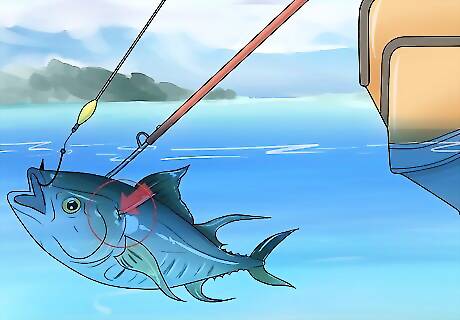
Lower the gaff and position it behind the gills. Move the gaff across the backside of the fish and position the hook facing down. You should aim for the spot that's right behind the fish's gills, right under the dorsal fin. This soft area is easy to penetrate and can hold the weight the fish. Other areas, like near the tail or stomach, are softer and could cause the gaff to become dislodged, or you could rip the fish apart.
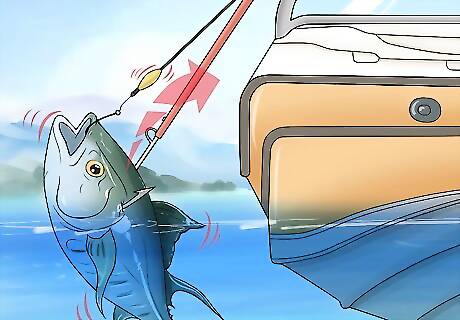
Pull and lift the fish into the boat. With one quick motion, you'll want to penetrate the flesh of the fish by pulling on the gaff pole. Once you've hooked the fish, lift up to sink the hook into the fish. Use your other hand and grab the front grip of the gaff pole to help stabilize the pole and drag the fish in.Try to do this in one fluid motion. If the fish is still thrashing around, you can hold it on the side of the boat until it calms down before transferring it to the boat's floor.
Determining if You Should Gaff the Fish
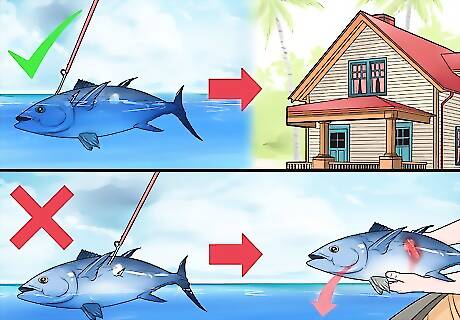
Only gaff fish you know you want to keep. Don't bother gaffing a fish if you're unsure if you're going to keep it. Gaffing a fish on its side will harm it, and if you throw it back it will most likely die in the water. For this reason, only gaff fish that you know you are going to keep and take home.
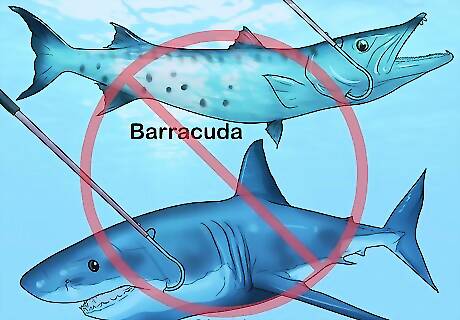
Don't gaff barracuda or sharks. Unless you're fishing specifically for sharks or barracudas you should avoid gaffing them all together. Many fishermen don't bring these fish on board because of the risk of getting bitten. Instead of gaffing these fish, cut your line and let them have the hook.
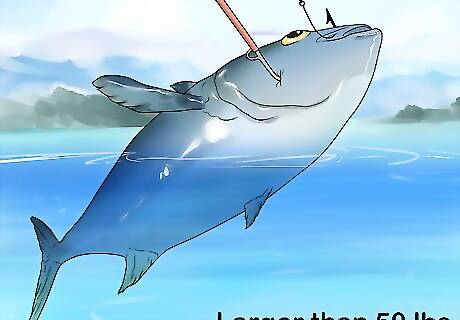
Gaff fish larger than 50 pounds (22.67 kg). Gaffing is especially effective for reeling in larger fish. If you are trying to catch fish that are smaller than 50 pounds (22.67 kg) you can use a net to bring them into your boat. Netting smaller fish rather than gaffing will ensure that you're not damaging the fish if you decide to throw it back.
Staying Safe

Don't gaff the fish near the tail. Gaffing a fish near the tail opens up the opportunity for it to thrash around and potentially hurt someone. Be careful not to gaff the fish near the tail, especially with fish that have sharp spines or teeth.
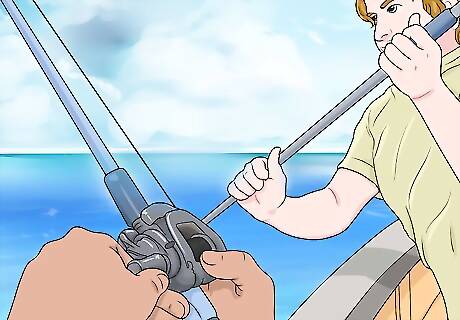
Have at least two people fishing when gaffing. When gaffing fish, it's important that you have one person leading the fish on the pole and another person gaffing. Don't attempt to do both things yourself because you need both of your hands to gaff.
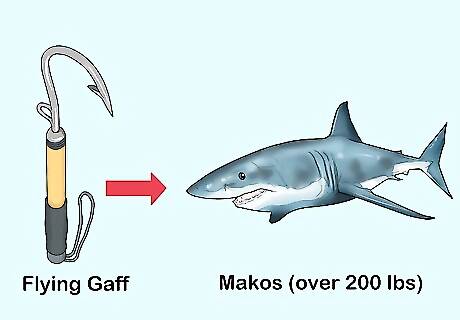
Use a flying gaff for fish that are over 200 pounds (90.71 kg). When targeting larger fish like makos, swordfish, or large tuna, a flying gaff is much safer than the traditional gaff. The head of a flying gaff separates from the pole and is cleated to the boat by a 15-foot line. This puts the strain off of you and distributes it to the thick line.
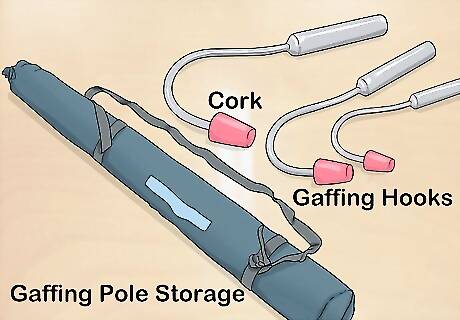
Keep gaffing hooks covered when you're not using them. Keep all gaff poles in storage when you're not using them. Additionally, you can cover the sharp tips of the gaff hooks with safety spring, tennis ball, cork, or PVC tubing.




















Comments
0 comment